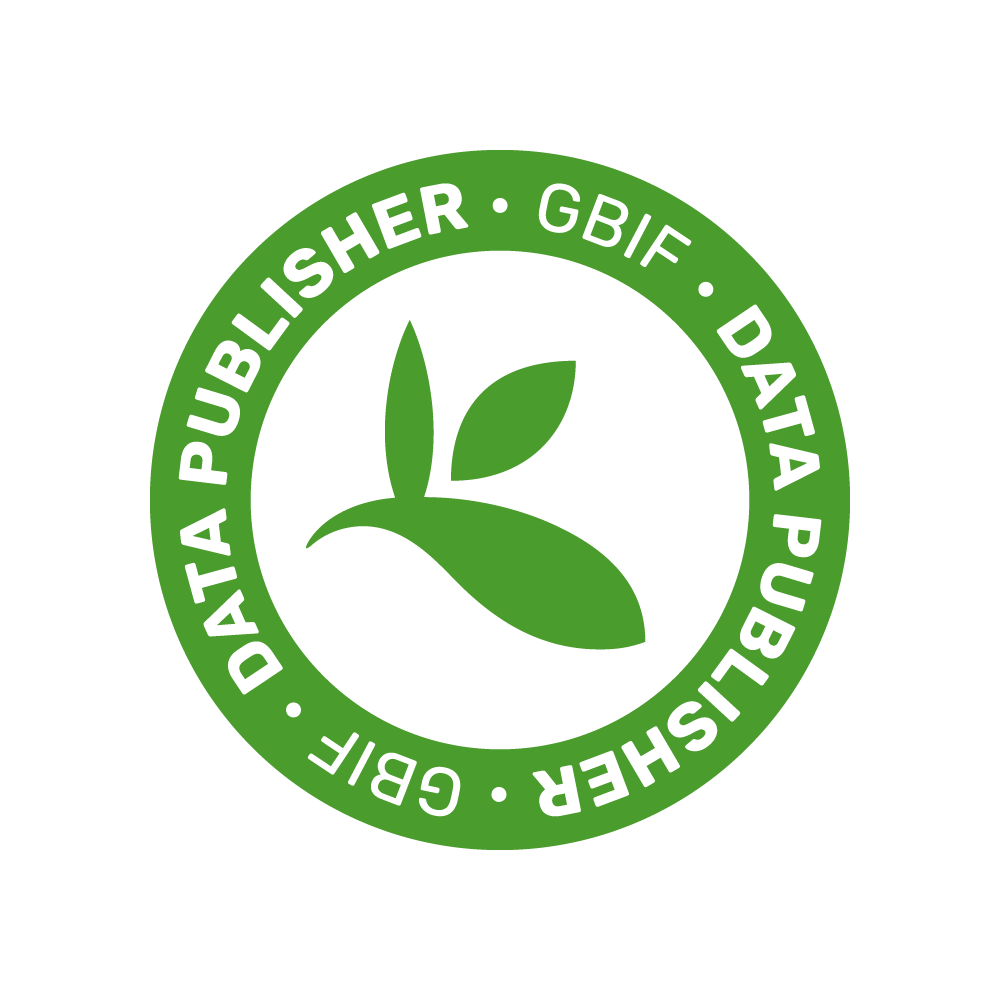Anna Valenti
Role: Researcher
Section: Researchers and Technologists
Division: Naples
Tel: (39) 081-6132247
E-mail: anna.valenti[at]cnr.it
URL: http://ibbr.cnr.it

PERSONAL INFORMATION
Valenti Anna:
ORCID: 0000-0002-5278-3524
Nationality: Italy
EDUCATION
- 2008 Applied Biology PhD University of Naples "Federico II".
- 2004 Biological Sciences Degree University of Naples "Federico II".
CURRENT POSITION
- 2014-present Staff Researcher at National Council of Research of Italy, Institute of Biosciences and BioResources (IBBR) -Naples
PREVIOUS POSITIONS
- 2012-2014 Staff Researcher National Council of Research of Italy/ Institute of Protein Biochemistry (IBP)- Naples
- 2012 Temporary position as Researcher National Council of Research of Italy/ Institute of Protein Biochemistry (IBP)- Naples
- 2008-2012 Post-doctoral fellow National Council of Research of Italy/ Institute of Protein Biochemistry (IBP)- Naples.
- 2004-2008 PhD student in Applied Biology University of Naples "Federico II".
FELLOWSHIPS
- 2008-2012 Post-doctoral fellowship at National Council of Research of Italy/Institute of Protein Biochemistry in Naples (CNR-IBP)
- 2004-2008 Research fellowship at National Council of Research of Italy/Institute of Protein Biochemistry in Naples (CNR-IBP)
REVIEWING ACTIVITIES
- 2020-present Guest Editor of Catalyst Journal
- 2019-present Editorial Board member of Scientific Reports (Nature Journal)
RESEARCH ACTIVITY
My research activities at the Naples Division of IBBR are mainly focused on biochemical studies of conserved proteins and enzymes involved in DNA transactions. During PhD work and subsequently, I dedicated my activity to analyze the roles of proteins related to DNA structure regulation and to the safeguard of genomic stability. Pioneering studies have been carried out, in vivo and in vitro, on molecular adaptation to high temperatures by clarifying the role of peculiar DNA topoisomerases in thermophilic organisms. The expertise acquired in the manipulation of DNA-enzymes has provided the basis to coordinate several studies on DNA interacting proteins, both in thermophilic and mesophilic organisms and to open international collaborations, which have led to achieve significant results in the field of: i) the interaction between human topoisomerases and small molecules; ii) the analysis of DNA topology at the nanometric level; iii) the link between DNA topology and DNA transcations; iv) in vivo and in vitro study of conserved DNA-alkyltransfares both in prokaryotes and eukaryotes. In the last years she was also interested in the biotechnological application by employing DNA active enzymes.
The results obtained in my carrier derived from different collaborations and many of them were international.
Ten Representative Pubblications
- Mattossovich, R., Merlo, R., Miggiano, R., Valenti A*, Perugino, G. O6-alkylguanine-DNA alkyltransferases in microbes living on the edge: From stability to applicability International Journal of Molecular Sciences, 2020, 21(8), 2878 IF. 5.923
*corresponding author
This review traces recent progress in this class of thermozymes, emphasizing their usefulness in basic research and their consequent advantages for in vivo and in vitro biotechnological applications.
- Visone V, Szabó I, Perugino G, Hudecz F, Bánóczi Z, Valenti A. Topoisomerases inhibition and DNA binding mode of daunomycin-oligoarginine conjugate. J Enzyme Inhib Med Chem. 2020 IF. 5.091
This work showcases for the first time the effect of daunomycin-oligoarginine derivative on topoisomerase inhibition. The results of biochemical studies represent a proof-of-concept, which open new strategies to expand the effect of anthracycline on the DNA-interacting enzymes inhibition, contributing to the rational design of new chemotherapeutic compound with enhanced potency.
- Serpe M, Forenza C, Adamo A, Russo N, Perugino G, Ciaramella M, Valenti A* (2019). The DNA Alkylguanine DNA Alkyltransferase-2 (AGT-2) Of Caenorhabditis Elegans Is Involved In Meiosis And Early Development Under Physiological Conditions. Sci Rep. 9: 6889. IF. 4.379
*corresponding author
The paper report for the first time the characterization of DNA Alkyltransferase-2 (AGT-2) Of Caenorhabditis Elegans. For these analyses I used microscopy techniques for immunofluorescence detection and for nematodes manipulation thus acquiring an expertise in this field. These studies demonstrate an unexpected role of AGT in meiosis and early development under physiological conditions. This work suggests a general function for AGTs in cell processes, which is distinct from repair of alkylating damage.
- Defez R*, Valenti A*, Andreozzi A, Romano S, Ciaramella M, Pesaresi P, Forlani S, Bianco C. New Insights into Structural and Functional Roles of Indole-3-acetic acid (IAA): Changes in DNA Topology and Gene Expression in Bacteria. Biomolecules. 2019 Sep 23;9(10). IF. 4.694.
*first author
This pioneeristic work demonstrate the involvement of the plant hormone Indole-3-acetic acid IAA in the DNA structure/function modifications. This paper proposes for the first time the IAA as DNA -binding agent able to inhibit selected DNA topoisomerases, influencing DNA conformational changes and gene expression. These studies suggest potential application of IAA in cancer therapy.
- Bettotti P, Visone V, Lunelli L, Perugino G, Ciaramella M, Valenti A.* (2018). Structure and Properties of DNA Molecules Over The Full Range of Biologically Relevant Supercoiling States. Sci Rep. 18: 6163. IF: 4.379 *corresponding author
This work reports a comprehensive analysis by AFM of DNA plasmid molecules with defined supercoiling degree, covering the full spectrum of biologically relevant topologies. The characterization of DNA supercoiling under different chemical physical conditions has clarified the relationship between DNA topology and its biological function.
- Visone V, Han W, Perugino G, Del Monaco G, She Q, Rossi M, Valenti A*, Ciaramella M*. (2017). In vivo and in vitro protein imaging in thermophilic archaea by exploiting a novel protein tag. PLoS One. Oct 3;12(10):e0185791. doi: 10.1371/journal.pone.0185791. eCollection 2017 IF: 3.240
*corresponding author
This is the first report of in vivo imaging of any protein of a thermophilic archaeon, filling an important gap in available tools for cell biology studies in these organisms.
- Vvedenskaya IO, Zhang Y, Goldman SR, Valenti A, Visone V, Taylor DM, Ebright RH, Nickels BE. (2015) Massively Systematic Transcript End Readout, "MASTER": Transcription Start Site Selection, Transcriptional Slippage, and Transcript Yields Mol Cell. 2015 Dec 17;60(6):953-65 IF: 17.974
This paper proposes a new approach to analyze biological processes that involve protein-nucleic acid interactions clarifying the relationship between transcription and DNA topology
- Valenti A, Napoli A, Ferrara MC, Nadal M, Rossi M, Ciaramella M (2006). Selective degradation of reverse gyrase and DNA fragmentation induced by alkylating agent in the archaeon Sulfolobus solfataricus. Nucleic Acids Res, ISSN: 0305-1048 IF: 16.971
This paper reports on the effect of DNA alkylation damages in the archaeon Sulfolobus solfataricus, describing a mechanism of DNA degradation and proteins regulation after methylation treatment.
- Valenti A, Perugino G, Nohmi T, Rossi M, Ciaramella M. Inhibition of translesion DNA polymerase by archaeal reverse gyrase. Nucleic Acids Res. 2009 Jul;37(13):4287-95. IF: 16.971
This paper described the inhibition of translation polymerase by topoisomerase reverse gyrase. These results suggest a previously unconsidered mechanism preventing potentially mutagenic activity of polymerase when undesired.
- Valenti A, Perugino G, D’Amaro A, Cacace A, Napoli A, Rossi M, Ciaramella M. Dissection of reverse gyrase activities: insight into the evolution of a thermostable molecular machine Nucleic Acids Res (2008) Aug;36(14):4587-97 IF: 16.971 This paper shows the biochemical mechanism of reverse gyrase activity by dissecting the enzyme in two distinct domains. These studies clarify the role of each part in positive supercoiling activity.
PROJECT RESPONSABILITY
- Project coordinator In the frame of PRIN: PROGETTI DI RICERCA DI RILEVANTE INTERESSE NAZIONALE BANDo PNRR 2022: The small Natural molEculE indole-3-acetic acid (IAA) to influence DNA Structure and Function: new perspective for targeted cancer therapy (NEEDS) (2023-2025)
- Participant in Operative Unit In the frame of PRIN: PROGETTI DI RICERCA DI RILEVANTE INTERESSE NAZIONALE 2022: Bound states in the continuum PLAtform for ultrasensitive Sensing of mycotoxins in contamined food (B-PLAS). Coordinator: Prof Ivo Rendina (2023-2025)
- Research Unit coordinator: ISenseDNA concerning the development of DNA-nanotransducers for biomolecules structure and function identification. In the frame of HORIZON-EIC-2021-PATHFINDEROPEN-01-01 (2022-2026)
- Participant in Operative Unit In the frame of PRIN: PROGETTI DI RICERCA DI RILEVANTE INTERESSE NAZIONALE - 2017 prot. 2017954 wnt "UNderstanding how stress affects honey bee Immunity to manage COlony losses (UNICO)". Unit coordinator: Silvia Gigliotti
- Participant in Operative Unit: “Progetto trasferimento tecnologico e di prima industrializzazione per le imprese innovative ad alto potenziale per la lotta alle patologie oncologiche - campania terra del buono” :"Good Water" . POR Campania-FESR 2014-2020. Unit Coordinator: Ivo Rendina (IMM-CNR)
- Participant in Operative Unit: “Fondazione CARIPLO” (2016-2018) Rif. 2016-0604: "Deciphering molecular aspects of Mycobacterium tuberculosis DNA repair to disclose its role in the pathogenesis tuberculosis in humans". Unit coordinator: Dr.Giuseppe Perugino (IBBR-CNR-NA).
- Unit coordinator: MIUR-FIRB (2013-2016) RBFR12OO1G_002: "Materiali Nanoporosi: lavagnEautoasseMblAnti per lo sTudio della struttura e delle Interazioni del DNA (NEMATIC)". Principal Investigator: Dr. Paolo Bettotti (IBP - CNR).
- Participant in Operative Unit: AIRC (2012-2015): "Cisplatin sensitivity/tolerance/resistance genetic pathways in hereditary cancer predisposition". Principal Investigator: Dr. La Volpe Adriana (IGB - CNR).
- Participant in Operative Unit: TELETHON (2012-2015): "New pharmacological targets in Fanconi Anemia". Principal Investigator: Dr. La Volpe Adriana (IGB - CNR).
- Participant in Operative Unit: CNR Progetto MERIT(2011-2016): Oncologia Molecolare. Unit Coordinator: prof. Rossi Mosè (IBP - CNR).
- Participant in Operative Unit: Agenzia spazialeitaliana (2007-20009) Dalle Molecole all’Uomo: Applicazioni Biotecnologiche della Ricerca Spaziale” PI Maria Ciaramella Unit Coordinator: prof. Rossi Mosè (IBP - CNR).
- Participant in Operative Unit: MIUR (2004-2006) - Progetto N. 151- PI Mosè Rossi (IBP - CNR).
Selected Publications
(full list available at CNR People)
First thermostable CLIP-tag by rational design applied to an archaeal O-alkyl-guanine-DNA-alkyl-transferase
Merlo R, Mattossovich R, Genta M, Valenti A, Di Mauro G, Minassi A, Miggiano R, Perugino G
Year: 2022
In vivo analysis of FANCD2 recruitment at meiotic DNA breaks in Caenorhabditis elegans
Germoglio M, Valenti A, Gallo I, Forenza C, Santonicola P, Silva N, Adamo A
Year: 2020
A journey down to hell: new thermostable protein-tags for biotechnology at high temperatures
Mattossovich R, Merlo R, Fontana A, d’ippolito G, Terns MP, Watts EA, Valenti A, Perugino G
Year: 2020
O6-alkylguanine-DNA Alkyltransferases in Microbes Living on the Edge: From Stability to Applicability
Mattossovich R, Merlo R, Miggiano R, Valenti A, Perugino G
Year: 2020
The SNAP- tag technology revised: an effective chemo-enzymatic approach by using a universal azide-based substrate
Merlo R, Caprioglio D, Cillo M, Valenti A, Mattossovich R, Morrone C, Massarotti A, Rossi F, Miggiano R, Leonardi A, Minassi A, Perugino G
Year: 2020
Topoisomerases inhibition and DNA binding mode of daunomycin-oligoarginine conjugate
Visone V, Szabó I, Perugino G, Hudecz F, Bánóczi Z, Valenti A
Year: 2020
New insights into structural and functional roles of Indole-3-acetic acid (IAA): Changes in DNA Topology and gene expression in Bacteria
Defez R, Valenti A, Andreozzi A, Romano S, Ciaramella M, Pesaresi P, Forlani S, Bianco C
Year: 2019
Thermostability enhancement of the α-carbonic anhydrase from Sulfurihydrogenibium yellowstonense by using the anchoring-and-self-labelling- protein-tag system (ASL tag )
Del Prete S, Merlo R, Valenti A, Mattossovich R, Rossi M, Carginale V, Supuran CT, Perugino G, Capasso C
Year: 2019
An AGT-based protein-tag system for the labelling and surface immobilization of enzymes on E. coli outer membrane
Merlo R, Del Prete S, Valenti A, Mattossovich R, Carginale V, Supuran CT, Capasso C, Perugino G
Year: 2019
The DNA Alkylguanine DNA Alkyltransferase-2 (AGT-2) of Caenorhabditis elegans is involved in meiosis and early development under physiological conditions
Serpe M, Forenza C, Adamo A, Russo N, Perugino G, Ciaramella M, Valenti A
Year: 2019
Structure and properties of DNA molecules over the full range of biologically relevant supercoiling states
Bettotti P, Visone V, Lunelli L, Perugino G, Ciaramella M, Valenti A
Year: 2018
Crystal structure of a thermophilic O6-alkylguanine-DNA alkyltransferase-derived self-labeling protein-tag in covalent complex with a fluorescent probe
Rossi F, Morrone C, Massarotti A, Ferraris DM, Valenti A, Perugino G, Miggiano R
Year: 2018
Every OGT is illuminated… by fluorescent and synchrotron lights
Miggiano R, Valenti A, Rossi F, Rizzi M, Perugino G, Ciaramella M
Year: 2017
Interdomain interactions rearrangements control the reaction steps of a thermostable DNA alkyltransferase
Morrone C, Miggiano R, Serpe M, Massarotti A, Valenti A, Del Monaco G, Rossi M, Rossi F, Rizzi M, Perugino G, Ciaramella M
Year: 2017
In vivo and in vitro protein imaging in thermophilic archaea by exploiting a novel protein tag
Visone V, Han W, Perugino G, del Monaco G, She Q, Rossi M, Valenti A, Ciaramella M
Year: 2017
A novel thermostable protein-tag: optimization of the Sulfolobus solfataricus DNA- alkyl-transferase by protein engineering
Vettone A, Serpe M, Hidalgo A, Berenguer J, Del Monaco G, Valenti A, Rossi M, Ciaramella M, Perugino G
Year: 2016
Structure-function relationships governing activity and stability of a DNA alkylation damage repair thermostable protein
Perugino G, Miggiano R, Serpe M, Vettone A, Valenti A, Lahiri S, Rossi F, Rossi M, Rizzi M, Ciaramella M
Year: 2015
Massively Systematic Transcript End Readout, “MASTER”: Transcription Start Site Selection, Transcriptional Slippage, and Transcript Yields
Vvedenskaya I, Zhang Y, Goldman S, Valenti A, Visone V, Taylor D, Ebright R, Nickels B
Year: 2015
Genome caretakers from hyperthermophilic crenarchaea
Ciaramella M, Perugino G, Rossi M, Serpe M, Valenti A, Vettone A, Visone V
Year: 2014
The reverse gyrase form Pyrobaculum calidifontis, a novel extremely thermophilic DNA topoisomerase endowed with DNA unwinding and annealing activities
Jamroze A, Perugino G, Valenti A, Rashid N, Rossi M, Akhtar M, Ciaramella M
Year: 2014
Activity and regulation of archeal DNA alkyltransferase involved in repair of DNA alkylation damage
Perugino G, Serpe M, Vettone A, Valenti A, Ciaramella M
Year: 2014
A novel flexible protein tag for thermophiles: the Sulfolobus solfataricus DNA-alkyltransferase protein
Perugino G, Vettone A, Serpe M, Valenti A, Berenguer JC, Huertas AH, Rossi M, Ciaramella M
Year: 2014
Detection of DNA-protein interaction and structural modifications by nanopore-based microarrays.
Valenti A, Bettotti P, Ciaramella M, Chiari M, Cretich M, Gagni P, Perugino G, Vettone A, Visone V
Year: 2014
Genome stability: recent insights in the topoisomerase reverse gyrase and thermophilic DNA alkyltransferase
Vettone A, Perugino G, Rossi M, Valenti A, Ciaramella M
Year: 2014
A new analytical approach to study DNA protein interactions and modifications
Visone V, Bettotti P, Ciaramella M, Chiari M, Cretich M, Gagni P, Perugino G, Valenti A, Vettone A
Year: 2014
Chromatin structure and dynamics in hot environment: architectural proteins and DNA topoisomerases of thermophilic archaea
Visone V, Vettone A, Serpe M, Valenti A, Perugino G, Rossi M, Ciaramella M
Year: 2014




